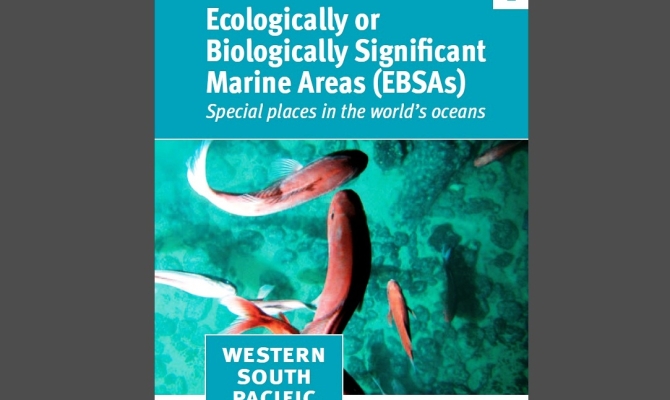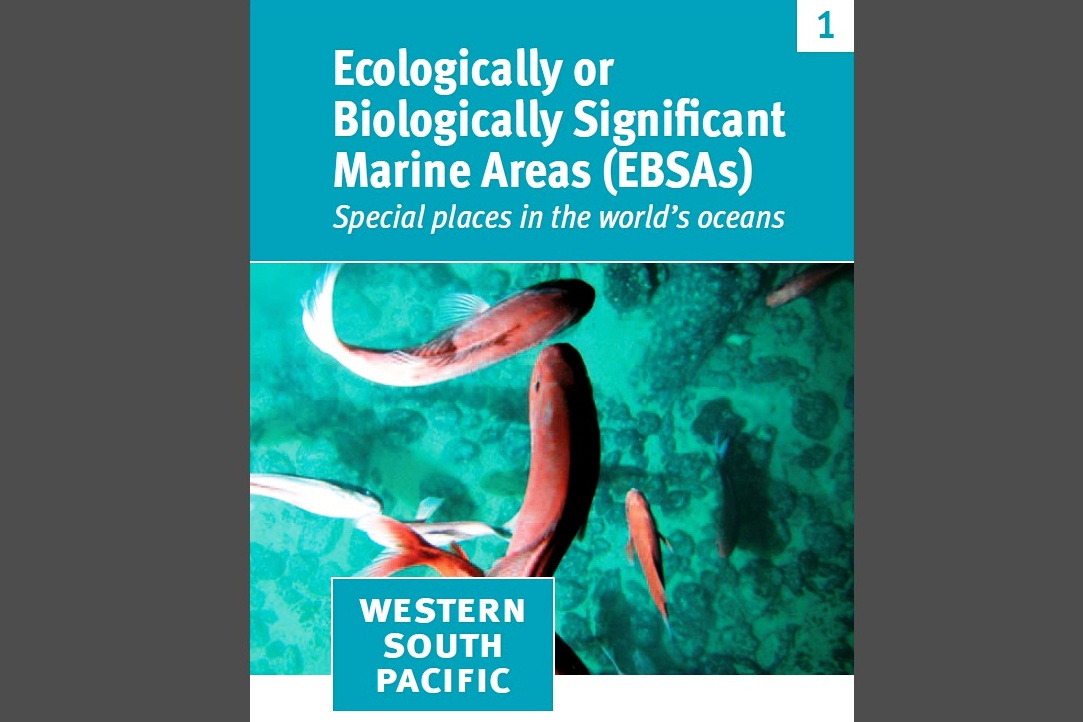
Island and Ocean Ecosystems

08 October 2014, Pyeongchang Korea, CBD COP12 – The Secretariat of the Convention on Biological Diversity has launched apublication on Ecologically or Biologically Significant Marine Areas (EBSAs) of the Western South Pacific. The report is the outcome of workshop convened by the SCBD and SPREP in Fiji in 2011 to identify South Pacific EBSAs, followed by detailed analysis.
The ocean encompasses 71 per cent of the planet and the Pacific region 30%. The great majority of ocean life is found in the top 100 meters of the open ocean, however, far below the surface are seamounts and other habitats that support rich and diverse ecosystems and communities. In order to conserve marine biodiversity effectively, knowing where to focus and prioritise conservation and management is vital, and this is where EBSAs plays a key role.
In 2008 Parties to the CBD adopted seven criteria to be used when identifying EBSAs: uniqueness or rarity; special importance for species during different life stages; importance for threatened species endangered or declining species and/or their habitats; and other factors such as fragility, sensitivity, or biological diversity; and naturalness.
In 2011 the CBD Secretariat coordinated the first of several regional workshops across the globe in the Pacific islands in partnership with the Secretariat of the Pacific Regional Environment Programme (SPREP) and the Australian Government Commonwealth Scientific and Industrial Research Organisation (CSIRO).
This led to the development of "Volume 1 of the Ecologically or Biologically Significant Marine Areas (EBSAs) Special places in the world's oceans, Western South Pacific" that was launched at the 12th Conference of the Parties to the Convention on Biological Diversity in Pyeongchang Korea this week.
"There is a particular urgency to identify and manage open-ocean areas which provide connectivity and habitats for key fishery species, migration corridors and habitats for threatened species such as turtles, marine mammals, sharks and birds, yet which in many ways remain among the least-known regions on the planet," said Mr. Stuart Chape, Director of Biodiversity and Ecosystem Management, Secretariat of the Pacific Regional Environment Programme (SPREP).
"Synthesising available data and defining specific ecologically or biologically significant areas within this vast ocean realm provides an important basis to assist in sustainable management of the Pacific at national and regional scales."
The outcome of the Western South Pacific EBSA workshop presented in the booklet launched this week will assist in providing an impetus to improve the effectiveness of ocean management, part of the Pacific Oceanscape Framework adopted by Pacific Islands Leaders.
"It's a positive example of utilising available scientific data as a basis for informing policy and management decision-making," said Mr. Chape.
The booklet features 26 case studies on EBSAs in the Western South Pacific Region ranging from the island of Niue to the Phoenix Islands in Kiribati.
The workshop and booklet was developed with support from the Secretariat of the CBD and the Governments of Australian, Germany and Japan.
14 Pacific island countries are party to the Convention on Biological DIversity with the Federated States of Micronesia, Fiji, Kiribati, Marshall Islands, Palau, Samoa, Solomon Islands, Tonga, Tuvalu and Vanuatu currently in Korea attending the CBD COP 12 from 6 - 17 October, 2014.